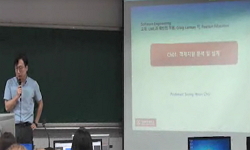Zero-waste pattern cutting is a groundbreaking sustainable fashion practice. However, few brands and designers have pursued this method because it requires creative pattern design that diverges from the existing process of using pattern slopers. There...
http://chineseinput.net/에서 pinyin(병음)방식으로 중국어를 변환할 수 있습니다.
변환된 중국어를 복사하여 사용하시면 됩니다.
- 中文 을 입력하시려면 zhongwen을 입력하시고 space를누르시면됩니다.
- 北京 을 입력하시려면 beijing을 입력하시고 space를 누르시면 됩니다.
https://www.riss.kr/link?id=A108498016
- 저자
- 발행기관
- 학술지명
- 권호사항
-
발행연도
2023
-
작성언어
Korean
- 주제어
-
등재정보
KCI등재
-
자료형태
학술저널
- 발행기관 URL
-
수록면
18-33(16쪽)
- 제공처
-
0
상세조회 -
0
다운로드
부가정보
다국어 초록 (Multilingual Abstract)
Zero-waste pattern cutting is a groundbreaking sustainable fashion practice. However, few brands and designers have pursued this method because it requires creative pattern design that diverges from the existing process of using pattern slopers. Therefore, application within the fashion industry is not sufficient. Therefore, in an attempt to highlight the key characteristics of zero-waste pattern design, this study classifies and analyzes cases in which similar designs employ zero-waste pattern-cutting techniques. We hope to make zero-waste pattern design more accessible by presenting realistic pattern-cutting guidelines. To this end, theoretical research on relevant literature, previous research, and online resources and an empirical analysis of cases involving zero-waste pattern cutting were conducted in parallel. As a result of the study, we were able to classify the factors of zero-waste pattern design in terms of fabric use, design, and composition. Regarding materials, our research revealed the importance of appropriate fabric width, understanding the difference between waste minimization and minimal fabric use, and easy reuse and recycling. In terms of design, the simultaneous progress of pattern and design work, adjustable loose silhouettes, and the use of surplus fabric for functional and decorative details emerged as key characteristics. For composition, we found that size adjustment limits, arrangement irregularity, and pattern shapes were crucial elements and that various arrangements revealed unlimited design potential.
동일학술지(권/호) 다른 논문
-
텍스트마이닝을 활용한 온라인 판매 여성 의류 상품명에 나타난 용어 및 정보분석
- 복식문화학회
- 강여선
- 2023
- KCI등재
-
- 복식문화학회
- 한기향
- 2023
- KCI등재
-
구리 스퍼터링 의류소재의 전기전도성과 스텔스 특성 - 의류소재 기공 크기 변화를 중심으로 -
- 복식문화학회
- 한혜리
- 2023
- KCI등재
-
요한 하우저 아르브뤼 작품의 조형적 특성을 활용한 3D 디지털 패션 디자인
- 복식문화학회
- 김아리
- 2023
- KCI등재






 ScienceON
ScienceON 코리아스칼라
코리아스칼라





